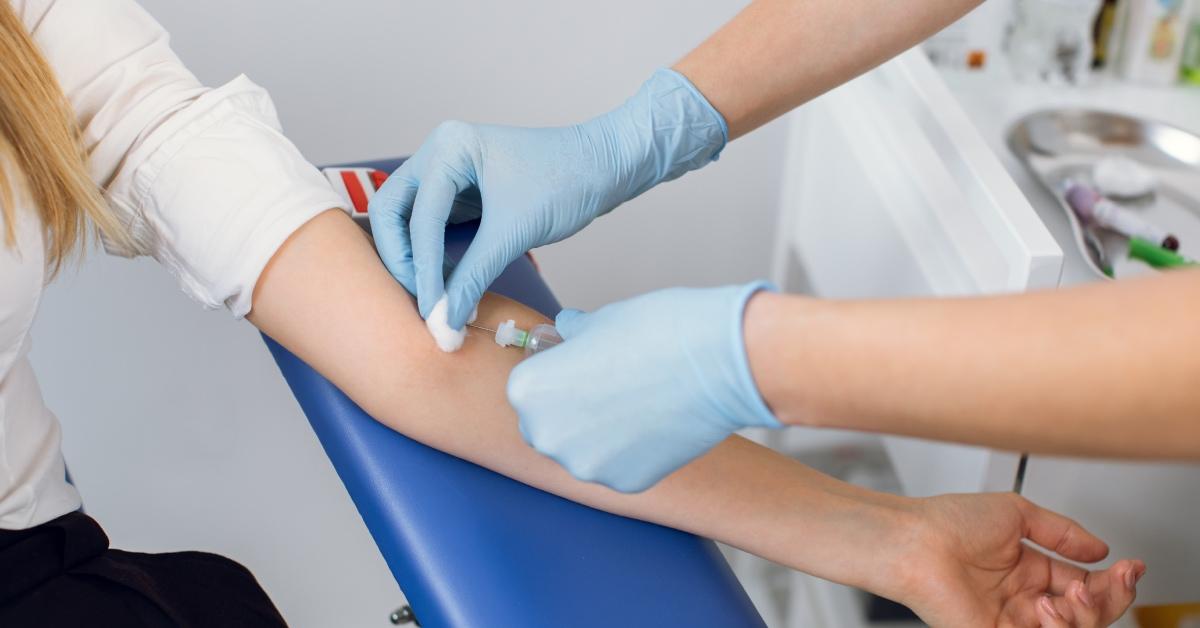Phlebotomists Make Decent Money and Don't Need Extensive Schooling
Phlebotomists’ salaries vary because compensation rates are based on education level, skills, certifications, and experience. So, what do they make?
Feb. 16 2023, Published 12:22 p.m. ET

If the sight of blood or needles leaves your stomach feeling queasy, the last thing you’d want to become is a phlebotomist. But, if you can handle both and are looking for a hands-on career in the medical field that doesn’t require you to spend most of your 20s in medical school, then you might consider a career in phlebotomy.
Just as important as it is for you to enjoy the work you do, you also need to be comfortable with the wages as we all know the bills won't pay themselves. So, if you’ve been weighing heavily on landing a career as a phlebotomist, we’ve done digging to find out how much they make per hour (on average) and what you need to do in order to become one.
Keep reading for details on this and much more.
What is the average salary of a phlebotomist?

A phlebotomist preparing to draw blood.
Phlebotomists’ salaries vary because compensation rates are based on education level, skills, certifications, experience, and more. But, if we had to give you a figure, it would be around $38,450 since this is what the U.S. Bureau of Labor Statistics lists as the average annual salary for a phlebotomist.
While some might make a little more or less, you can expect to receive somewhere between $28,990 and $48,490. If you landed a job as a phlebotomist making $38,450, you’d make $3,204 a month, $739 a week, $147.88 a day, and $18.49 an hour. These figures are based on a 40-hour workweek and don't include deductions.
What's the most a phlebotomist can make per hour?
The most a phlebotomist can make per hour is around $23.31 if their salary is on the higher end of the pay scale ($48,490). Although not many phlebotomists make this much, you can still secure $20 or more per hour working pricking fingers if you get hired in one of these top-paying states, according to the BLS:
- California
- District of Columbia
- New York
- Massachusetts
- Washington
Where can a phlebotomist work and make the most money?
A phlebotomist can work in any medical setting that requires the drawing of blood. This can include community health centers, clinics, doctor’s offices, diagnostic laboratories, hospitals, blood drives, and nursing homes.
The top-paying industries for phlebotomists, according to BLS data, are as follows:
- Grantmaking and giving services – average hourly wage is $27.51
- Individual and family services – average hourly wage is $21.16
- Outpatient care centers – average hourly wage is $20.48
- Management of companies and enterprises – average hourly wage is $20.71
- Scientific research and development services – average hourly wage is $21.29
What do phlebotomists do?
If you’re comfortable with the salary range listed above, then you’ll want to know exactly what a phlebotomist’s job entails. A phlebotomist is someone who is trained to collect blood samples and perform blood transfusions. Cleveland Clinic says phlebotomists might collect blood samples via these methods:
- Heel pricks (this is done on infants)
- Finger pricks
- Venipuncture (when a needle punctures the vein)
In addition to collecting the blood sample, a phlebotomist is also responsible for:
- Preparing a patient for blood collection. This includes easing the nerves of those who are deathly afraid of needles.
- Properly labeling vials.
- Sanitizing equipment before and after collecting blood.
- Tracking and storing blood samples before they are delivered for testing.
- Helping those who experience an adverse reaction to a blood draw or blood transfusion.
How do you become a phlebotomist?
Although you aren’t required to obtain a Ph.D. in order to become a phlebotomist, the job must be done with the utmost care and caution. To do this, you’ll need to undergo extensive training before you can begin poking and pricking patients. The requirements you must meet to become a phlebotomist vary by state but generally, you’ll need to complete a phlebotomy program in order to get a job.
Phlebotomy programs can take a year or less to complete and are offered at community colleges as well as technical and vocational schools. The courses usually cover medical terminology, physiology, anatomy, and hands-on training in a medical environment, according to Indeed.
Before you can enroll in a phlebotomy program, you’ll need to have graduated high school or earned your GED. And in order to exit it, you’ll need to take and pass a certification exam which usually consists of 300 questions (or less) and is separated into a written and practical section. Of course, you’ll also be asked to perform a blood draw.
